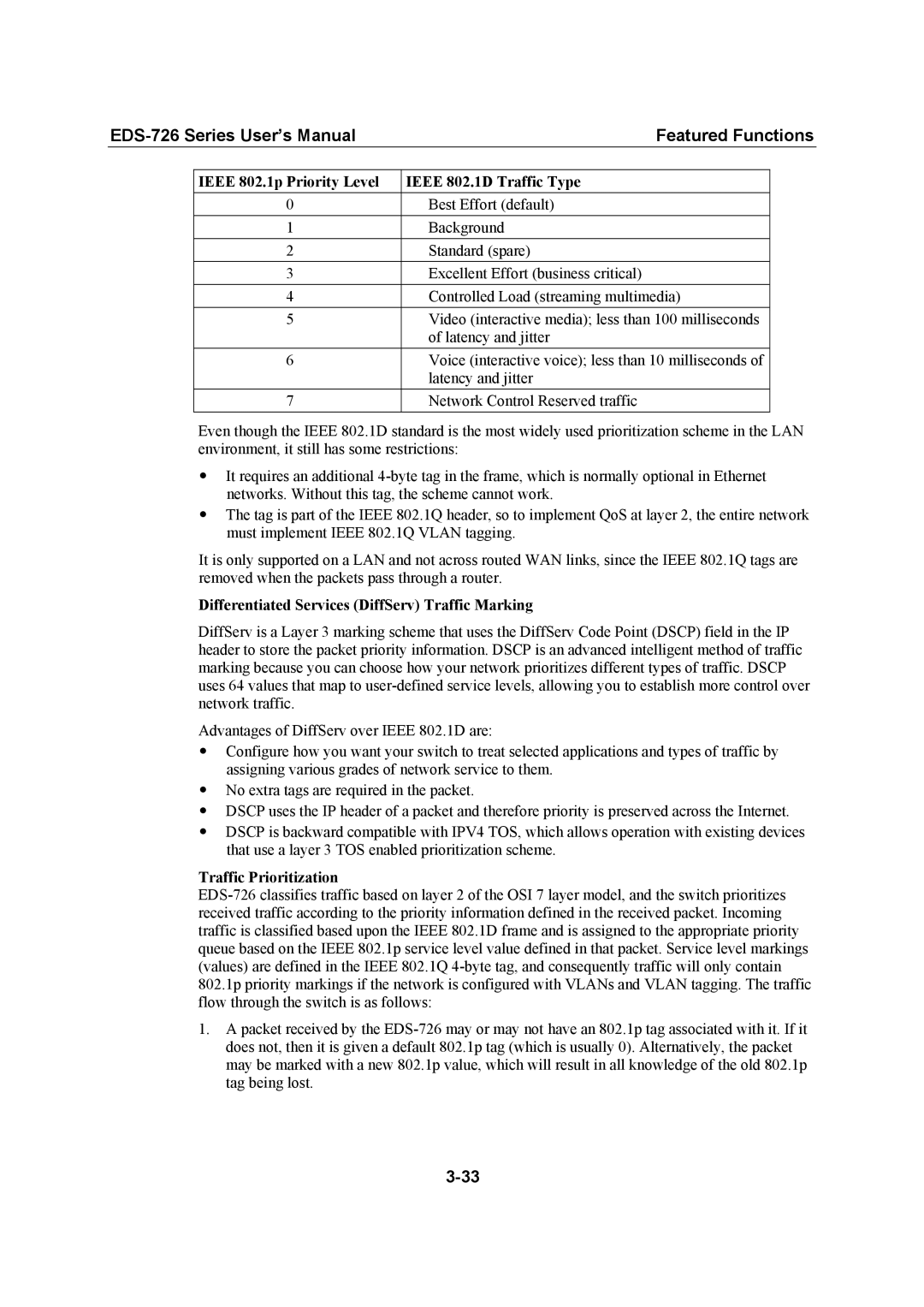Featured Functions | |||
|
|
|
|
| IEEE 802.1p Priority Level | IEEE 802.1D Traffic Type |
|
| 0 | Best Effort (default) |
|
| 1 | Background |
|
| 2 | Standard (spare) |
|
| 3 | Excellent Effort (business critical) |
|
| 4 | Controlled Load (streaming multimedia) |
|
| 5 | Video (interactive media); less than 100 milliseconds |
|
|
| of latency and jitter |
|
| 6 | Voice (interactive voice); less than 10 milliseconds of |
|
|
| latency and jitter |
|
| 7 | Network Control Reserved traffic |
|
Even though the IEEE 802.1D standard is the most widely used prioritization scheme in the LAN environment, it still has some restrictions:
yIt requires an additional
yThe tag is part of the IEEE 802.1Q header, so to implement QoS at layer 2, the entire network must implement IEEE 802.1Q VLAN tagging.
It is only supported on a LAN and not across routed WAN links, since the IEEE 802.1Q tags are removed when the packets pass through a router.
Differentiated Services (DiffServ) Traffic Marking
DiffServ is a Layer 3 marking scheme that uses the DiffServ Code Point (DSCP) field in the IP header to store the packet priority information. DSCP is an advanced intelligent method of traffic marking because you can choose how your network prioritizes different types of traffic. DSCP uses 64 values that map to
Advantages of DiffServ over IEEE 802.1D are:
yConfigure how you want your switch to treat selected applications and types of traffic by assigning various grades of network service to them.
yNo extra tags are required in the packet.
yDSCP uses the IP header of a packet and therefore priority is preserved across the Internet.
yDSCP is backward compatible with IPV4 TOS, which allows operation with existing devices that use a layer 3 TOS enabled prioritization scheme.
Traffic Prioritization
1.A packet received by the
